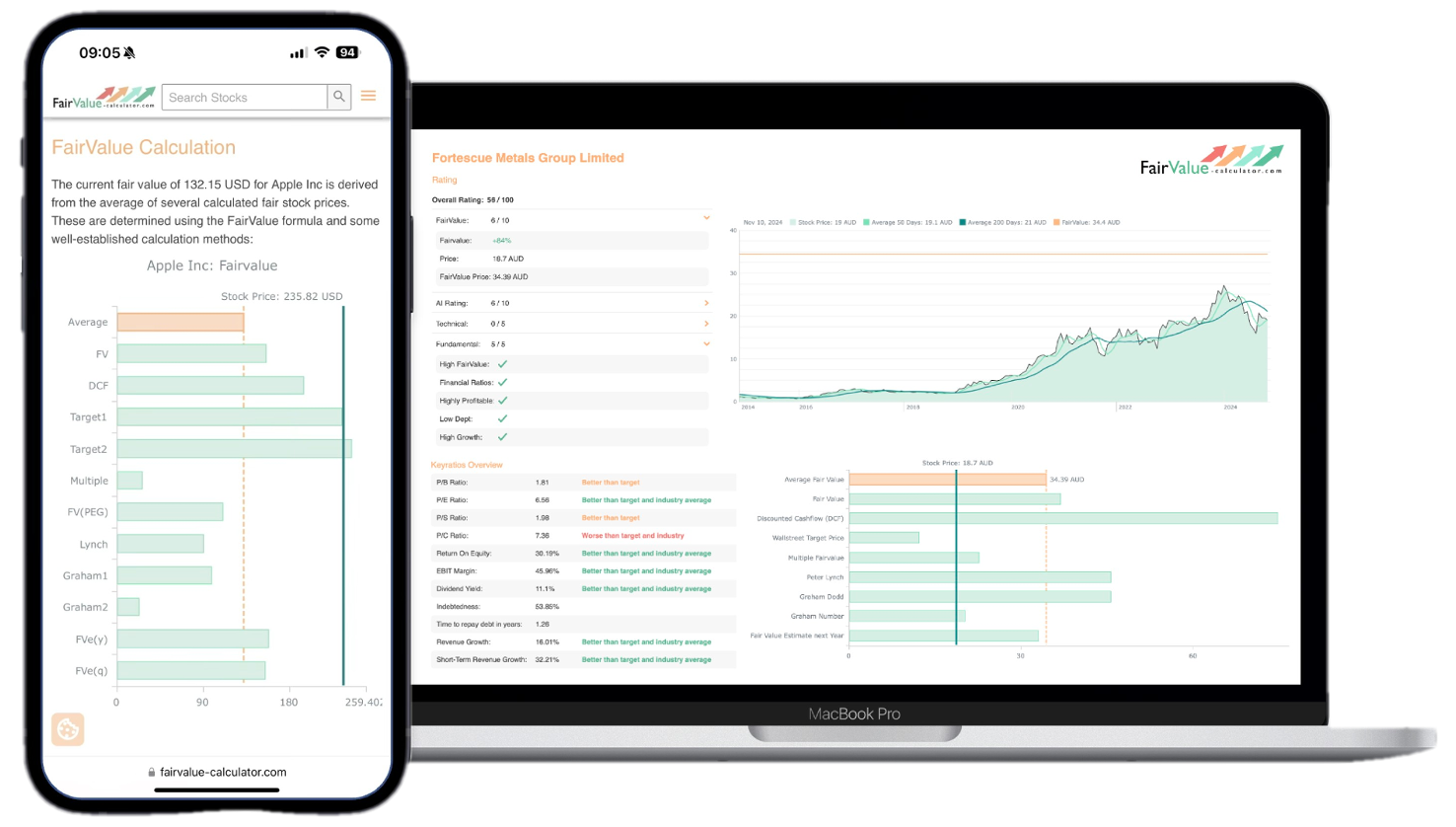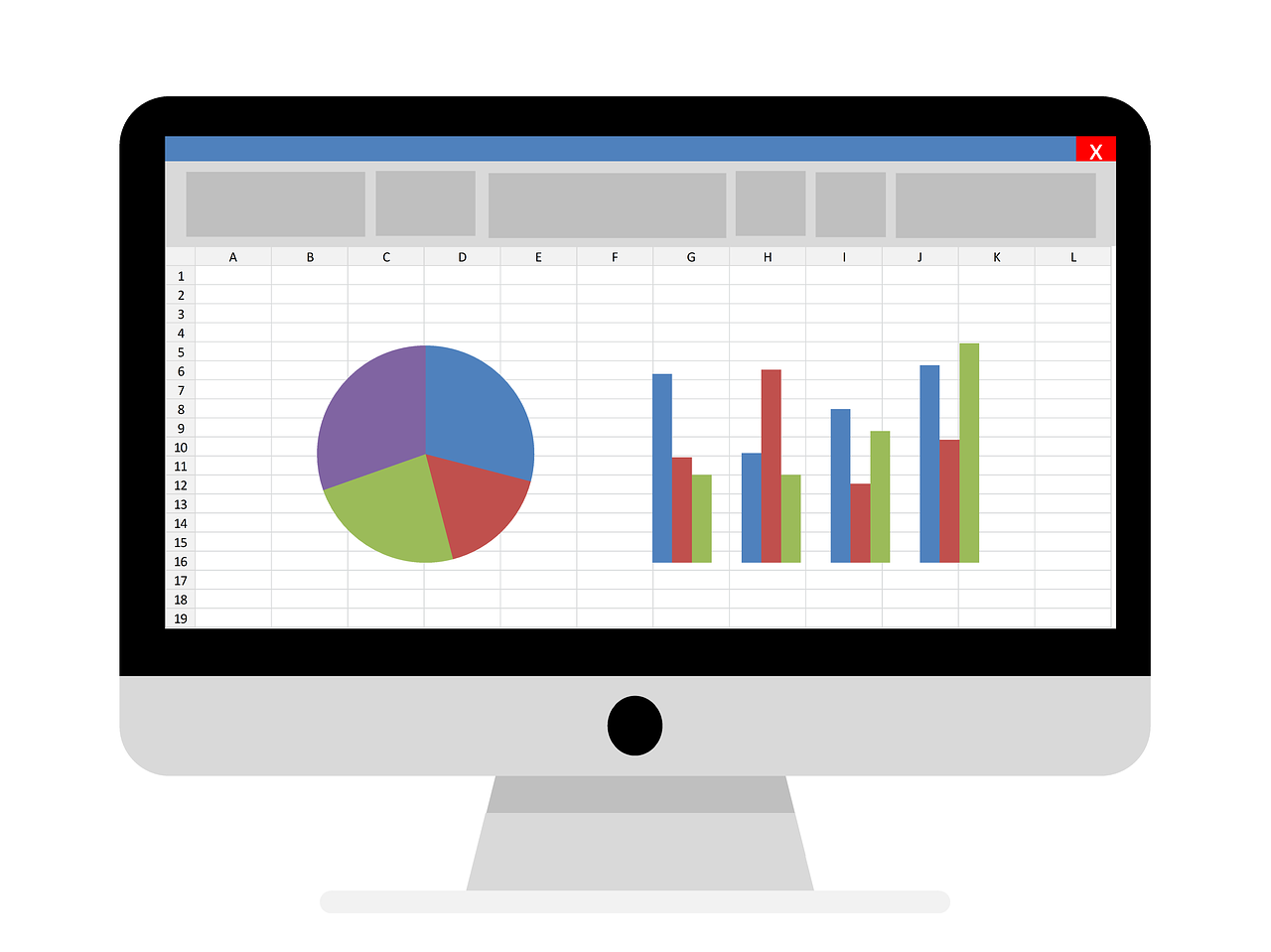In the ever-evolving world of finance, one question that often surfaces is: how does one pinpoint true value amidst market fluctuations? History has shown us that fair value estimates can be a powerful compass guiding investors through the turbulent waters of the stock market. These estimates, often grounded in meticulous analysis and objective metrics, have long served as a beacon for investors seeking to capitalize on stocks that the market might have undervalued at first glance. By looking back in time, we can uncover patterns that highlight the immense potential of investing in such undervalued treasures.
Consider the tale of an astute investor from decades past who recognized the hidden value in a seemingly average company. By relying on fair value estimates rather than the market’s fickle sentiments, this investor was able to reap substantial rewards over time. The historical comparison between fair value estimates and actual market prices reveals a consistent trend: while short-term variations might mislead, patience and strategic insight often result in significant long-term gains. In this blog post, we’ll delve deep into these historical correlations, unlocking strategies that could transform your investment approach and shed light on how fair value estimates have stood the test of time against fluctuating market prices.
💡 Discover Powerful Investing Tools
Stop guessing – start investing with confidence. Our Fair Value Stock Calculators help you uncover hidden value in stocks using time-tested methods like Discounted Cash Flow (DCF), Benjamin Graham’s valuation principles, Peter Lynch’s PEG ratio, and our own AI-powered Super Fair Value formula. Designed for clarity, speed, and precision, these tools turn complex valuation models into simple, actionable insights – even for beginners.
Learn More About the Tools →
The Concept of Fair Value Estimates in Finance
Fair value estimates represent a theoretical price at which a knowledgeable, willing buyer and seller would transact an asset in an open market. Unlike market prices, which reflect real-time supply and demand, fair value attempts to strip away emotion, speculation, and transient market noise. It draws upon fundamental factors, projected earnings, discounted cash flows, asset valuations, and industry multiples, to arrive at an intrinsic value. By synthesizing quantitative inputs with qualitative assessments of management quality, competitive positioning, and macroeconomic trends, fair value provides investors with a grounded perspective on what a stock “should” trade for based on its underlying fundamentals.
In practice, analysts employ various model, discounted cash flow (DCF), dividend discount model (DDM), and comparables analysis, to triangulate fair value. Each framework has its merits and limitations, but together they offer a robust toolkit for estimating intrinsic worth. When fair value significantly diverges from market price, opportunities for mispricing emerge. If the market price falls consistently below calculated fair value, it signals a potential undervaluation, inviting strategic investors to consider deploying capital. Understanding this conceptual foundation equips market participants to navigate volatility and maintain discipline amid ever-shifting investor sentiment.
🚀 Test the Fair Value Calculator Now!
Find out in seconds whether your stock is truly undervalued or overpriced – based on fundamentals and future growth.
Try it for Free →Importance of Fair Value Estimates in Investing
Fair value estimates serve as a critical anchor point for investment decisions, helping investors distinguish between sound opportunities and speculative traps. By comparing intrinsic worth to prevailing market prices, one can gauge whether a stock is trading at a premium or discount. This discipline encourages a value-driven mindset, prioritizing long-term growth potential over short-term price momentum. It also fosters consistency: investors who systematically integrate fair value analysis into their workflow avoid emotionally driven missteps during market euphoria or panic.
Moreover, fair value estimates enhance portfolio risk management. Identifying overvalued securities allows investors to trim exposure before they succumb to steep corrections, while spotting undervalued gems, stocks where market prices languish below true worth, positions portfolios to capture outsized gains. This dual perspective of identifying both undervaluation and overvaluation is especially vital during periods of heightened market volatility, when prices often disconnect from fundamentals. Ultimately, integrating fair value estimates into investment processes strengthens decision-making and bolsters the potential for superior risk-adjusted returns.
Explore our most popular stock fair value calculators to find opportunities where the market price is lower than the true value.
- Peter Lynch Fair Value – Combines growth with valuation using the PEG ratio. A favorite among growth investors.
- Buffett Intrinsic Value Calculator – Based on Warren Buffett’s long-term DCF approach to determine business value.
- Buffett Fair Value Model – Simplified version of his logic with margin of safety baked in.
- Graham & Dodd Fair Value – Uses conservative earnings-based valuation from classic value investing theory.
- Intrinsic vs. Extrinsic Value – Learn the core difference between what a company’s really worth and what others pay.
- Intrinsic Value Calculator – A general tool to estimate the true value of a stock, based on earnings potential.
- Fama-French Model – For advanced users: Quantifies expected return using size, value and market risk.
- Discount Rate Calculator – Helps estimate the proper rate to use in any DCF-based valuation model.
Historical Analysis: Fair Value Estimates vs. Market Prices
Exploring historical data reveals a recurring pattern: stocks trading below their fair value estimates tend to outperform the broader market over extended periods. This observation directly answers the question, “How has fair value estimates compared to market prices historically?” By analyzing decades of price and fair value data, researchers have documented how short-term divergences gradually converge, rewarding disciplined investors who anchored decisions in intrinsic valuation.
Consider the 20-year performance of a group of undervalued companies handpicked based on fair value analysis. Despite sporadic underperformance during market sell-offs, these stocks consistently delivered compounded annual returns exceeding those of popular benchmarks. The historical analysis underscores that patience and a long-term horizon are essential when relying on fair value estimates to guide capital allocation.
Case Studies on Successful Investments Based on Fair Value Estimates
One of the most celebrated examples is the investment in Ben Graham’s portfolio during the post-war years. Graham and his disciples bought shares trading at significant discounts to their calculated net asset values. Over the subsequent decade, these holdings generated extraordinary returns, validating Graham’s emphasis on a margin of safety. Another illustrative case is Warren Buffett’s purchase of American Express shares in the 1960s after a mass market panic over the “Salad Oil Scandal.” Buffett’s team estimated a fair value far above the depressed market price, and within a few years, the stock not only rebounded but became a core holding for Berkshire Hathaway.
More recently, in the dot-com bust of the early 2000s, investors who focused on profitable, cash-flow-generating companies with fair value estimates significantly above their trading prices reaped substantial gains as markets recovered. These real-world case studies demonstrate that investing in undervalued stocks with high fair value estimates can profit in the long run, provided investors maintain discipline and a multiyear perspective.
Factors Influencing Discrepancies Between Fair Value and Market Price
Market mispricings arise from a blend of behavioral biases, macroeconomic events, and structural market inefficiencies. Investor overreaction to earnings misses or geopolitical turmoil can push market prices well below calculated fair values. Conversely, irrational exuberance or speculative frenzy can propel prices beyond intrinsic worth. Understanding these catalysts helps investors anticipate and exploit temporary price distortions.
Behavioral biases such as herd mentality, recency bias, and anchoring often drive market participants to overemphasize recent news or follow the crowd, exacerbating price swings. On the macro front, shifts in interest rate policy, currency fluctuations, and economic data releases can create broad-based dislocations. Structural elements, liquidity constraints, index rebalancing effects, and algorithmic trading, can further widen gaps between market price and fair value estimates. Recognizing the interplay of these factors empowers investors to position tactically when divergences emerge.
Strategies for Utilizing Fair Value Estimates in Investment Decisions
To harness the power of fair value estimates, investors should adopt a structured, repeatable process. Begin by compiling a watchlist of companies with robust fundamentals and predictable cash flows. Apply multiple valuation models, DCF, DDM, and price-to-earnings comparables, to triangulate a range of fair value estimates. This multi-model approach reduces reliance on any single assumption and highlights potential model sensitivities.
Next, establish clear entry and exit criteria. For example, consider buying when the market price is 20% or more below the lowest fair value estimate, ensuring a sufficient margin of safety. Conversely, plan to trim or exit when market price exceeds fair value by a predetermined threshold, capturing gains before overvaluation intensifies. Regularly update your models to reflect changes in earnings projections, discount rates, and competitive dynamics. By integrating fair value estimation with risk management rules, investors can systematically exploit mispricings and enhance portfolio performance over time.
Risks Associated with Relying Solely on Fair Value Estimates
While invaluable, fair value estimates are not infallible. They depend heavily on assumptions, growth rates, discount rates, and terminal values, that can prove overly optimistic or pessimistic. Overconfidence in these inputs may lead investors to overlook warning signs or misjudge a company’s true prospects. Additionally, fair value models may fail to capture sudden disruptive events, such as technological breakthroughs or regulatory changes, that materially alter an industry’s landscape.
Relying exclusively on fair value without considering qualitative factors, management integrity, corporate governance, or emerging competitors, can also be perilous. Moreover, timing remains a challenge: a stock may trade below fair value for extended periods if market sentiment is persistently negative. Investors anchored solely to fair value might endure painful drawdowns before prices converge. Accordingly, fair value analysis should complement, not replace, comprehensive due diligence and ongoing monitoring.
Tools and Resources for Accessing Fair Value Estimates
Numerous platforms and research services provide pre-calculated fair value estimates, simplifying the analytical workload. Financial terminals like Bloomberg and FactSet offer integrated valuation modules, while investment research providers such as Morningstar publish proprietary fair value figures alongside detailed reports. For individual investors, online brokerage platforms often include basic fair value metrics, and dedicated websites like GuruFocus or Value Line specialize in value-oriented data.
Open-source tools and spreadsheets are also available. Many valuation templates, covering DCF, relative valuation, and dividend discount, can be downloaded for free, allowing users to customize assumptions. Educational resources, including webinars and valuation workshops, further enhance analytical skills. By leveraging these tools and staying abreast of methodological advances, investors can access reliable fair value estimates and apply them effectively in portfolio construction.
The Future Outlook: Evolution of Fair Value Estimates in Modern Finance
Advances in data analytics, machine learning, and alternative data sources are reshaping how fair value estimates are derived. Today, algorithms can ingest vast datasets, from satellite imagery to social media sentiment, to refine revenue forecasts and risk assessments. This integration of unstructured data promises more granular and timely valuation insights, potentially narrowing gaps between fair value estimates and market prices.
Furthermore, the rise of decentralized finance (DeFi) and tokenization of real-world assets may introduce new valuation paradigms. Automated valuation oracles, smart contracts, and blockchain-based audit trails could enhance transparency and real-time fair value dissemination. As markets evolve, investors who blend traditional valuation disciplines with cutting-edge technology will be best positioned to identify and exploit mispricings in a rapidly changing financial ecosystem.
Conclusion: Harnessing the Power of Fair Value Estimates for Long-Term Wealth Creation and Investment Success
Historical evidence underscores a clear message: disciplined investors who anchor decisions in fair value estimates consistently outperform the market over time. By focusing on intrinsic worth and patiently awaiting convergence, one can capitalize on undervalued opportunities that others overlook.
While no model guarantees success, combining rigorous fair value analysis with robust risk management and technological tools offers a proven path to long-term wealth creation. Embrace fair value estimates as a cornerstone of your investment approach, and let them guide you toward sustainable, above-market returns.







